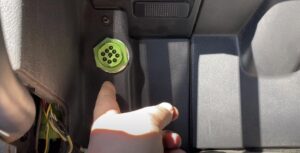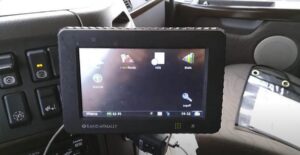
When you calmly listen to your favorite tune on the highway, all of a sudden, the dashboard light indicating the check engine comes on. “How long can I drive with the check engine light on?” is the first thought that comes to mind. Knowing exactly what this means and how to react is vital, as this happens frequently to many drivers.
Understanding the Check Engine Light
You must know what the check engine light means before you can explore the subject of how long you can drive with it on. Your car’s onboard diagnostics system includes it, and it can notify you if there’s a possible problem with your vehicle.
Many different things can cause the check engine light to come on. Some of these problems are small annoyances, while others, if ignored, might cause serious damage to the engine. The following are some of the most typical reasons why the check engine light comes on:
| Common Causes | Effects on the Vehicle |
| Loose Gas Cap | Simple issue, but can trigger the light. |
| Faulty Oxygen Sensor | Affects fuel efficiency and emissions. |
| Malfunctioning Catalytic Converter | Crucial for reducing harmful exhaust gases. |
| Bad Spark Plugs | Essential for proper engine ignition. |
| Mass Airflow Sensor Failure | Impairs the engine’s air-fuel mixture. |
Understanding these common triggers can provide valuable insights into the potential severity of the issue when the check engine light comes on. Now, let’s address the critical question:
The Big Question: How Long Can You Drive with the Check Engine Light On?

What caused the warning light to come on is a major factor in determining the complexity of the answer to this question. There are often two possible outcomes to think about:
If the Check Engine Light Is Flashing
- Immediate Attention Required: A malfunctioning engine, usually caused by a misfire in one or more cylinders, is the immediate cause of a warning light that is flashing. The catalytic converter is particularly vulnerable to harm by ignoring a flashing light, which can necessitate expensive repairs;
- Recommendation: Do not delay in responding to a flashing check engine light. You should not keep operating your car. Pull over to a safe area and switch off the engine instead. Tow your vehicle to the closest garage or repair shop as soon as possible. Under no circumstances should you drive while the check engine light is blinking.
If the Check Engine Light Is Steady
- Possible Minor Issue: Consistently illuminated check engine lights usually point to a less serious issue. You shouldn’t disregard it just because it doesn’t need fixing right now;
- How Long Can You Drive?: If possible, get the problem checked out and fixed within a week after the dashboard light comes on. The underlying problem may develop with time if you drive with a constant check engine light, which could cause more serious difficulties down the road.
It’s worth mentioning that the check engine light is more of an early warning system than a diagnostic instrument. A diagnostic scan tool or a skilled mechanic can scan your vehicle’s onboard computer system to identify the precise problem causing the light to come on. You can find the source of the problem with the help of the precise error codes provided by this.
What To Do When the Light Comes On
The Check Engine light, an ever-watchful sentinel on your car’s dashboard, can provoke unease and doubt as it abruptly becomes clear. It’s a warning that something is wrong with the engine, and you need to know what to do to keep your car in good repair and your money in your pocket. When the Check Engine light comes on, we’ll go over what to do in this section:
Check for Immediate Issues
Do not freak out if the Check Engine light unexpectedly comes on. Checking for obvious issues, such as a loose gas cap, should be your first step:
- Inspect the Gas Cap: Open the fuel door and check that the gas cap is tight. A broken or unsecured gas cap is one possible cause of the Check Engine light to come on;
- Tighten or Replace: If the gas cap is loosened or broken, you can either tighten it or get a new one. Since the system may need some time to reset, it’s recommended to drive for a few days to check whether the light goes out.
Use a Diagnostic Scanner
In the event that you have already checked the gas cap and still suspect a more complex problem, a diagnostic scanner will be your savior:
- Purchase or Borrow a Diagnostic Scanner: Get a diagnostic scanner—buy one or borrow one: Visit a business that sells auto components or ask around at local repair shops to borrow a diagnostic scanner;
- Locate the OBD-II Port: The Onboard Diagnostics II (OBD-II) port is usually located under the dashboard, next to the steering column. Find it. To find the exact spot, look in your handbook;
- Plug in the Diagnostic Scanner: Turn on the ignition key (not the engine key) and insert the diagnostic scanner into the vehicle’s OBD-II port;
- Retrieve Error Codes: To get the problem codes out of your car’s computer, follow the scanner’s directions. Important information regarding the issue that caused the Check Engine light to come on is provided by these codes;
- Research Error Codes: Either write down the error codes or snap a photo of the scanner’s screen. To learn more about the nature of the problem and possible solutions, use these codes to conduct internet research on the subject or refer to your vehicle’s repair manual.
Consult a Professional
Sometimes, the error codes could indicate a serious problem that needs expert help:
- Safety Concerns: Because of the seriousness of the situation, you should not delay in obtaining expert assistance if the Check Engine light is displayed alongside other warning lights, such as oil or temperature warnings;
- Unclear Diagnosis: Seek the advice of a qualified mechanic if you are unable to ascertain the source or if the error codes indicate a serious issue. For precise diagnosis and repair of complicated difficulties, their knowledge and equipment are priceless;
- Emission Testing: In areas where emissions testing is mandatory, failing the test is possible if the check engine light is on. To make sure it complies with emission rules, a mechanic can find the problem and fix it.
Potential Risks of Ignoring the Light

You should not ignore the Check Engine light because doing so can cause a number of problems:
- Increased Emissions: Unresolved problems can lead to increased emissions, which in turn can increase air pollution and lead to possible violations of environmental standards;
- Poor Fuel Efficiency: Reduced fuel efficiency can make you spend more money at the gas station if you choose to ignore the light;
- Major Engine Damage: Ignoring what seems like a small problem at first might cause serious damage to the engine, necessitating expensive repairs or perhaps a replacement of the engine.
Maintenance Tips to Avoid Check Engine Light Issues
To stay ahead of that pesky Check Engine light, prevention is usually key:
- Regular Oil Changes: Change the oil in your car according to the manufacturer’s recommended schedule for the best engine performance;
- Check and Replace Spark Plugs as Needed: Spark plugs that are too worn out might reduce engine efficiency and cause the Check Engine light to come on. It is advised that you replace them;
- Ensure Proper Gas Cap Sealing: Never let fuel vapors escape from your gas cap, as this could cause the Check Engine light to come on;
- Regularly Replace Air and Fuel Filters: basis. Clogged filters reduce engine performance. When replacing the filter, be sure to follow the manufacturer’s instructions.
Conclusion
When pondering “How long can I drive with the check engine light on?” remember it’s a signal not to be ignored. Timely action can save you from hefty repair bills and keep your car running smoothly. Always consult with a professional for accurate diagnostics and repairs.
FAQ
May I operate my vehicle while the check engine light is illuminated?
Yes, but it is advisable to have it inspected immediately in order to prevent potential damage.
How long can the check engine light remain illuminated before a serious problem develops?
It is ideal to have it inspected within a week; however, if the light is blinking, immediate attention is required.
Can a lengthy distance be traveled safely while the check engine light is illuminated?
To prevent breakdowns during lengthy distances, it is advisable to have the problem diagnosed beforehand.
What is the most frequent cause of the check engine light illuminate?
Frequent causes include loose gas lids, malfunctioning oxygen sensors, and spark plug problems.





